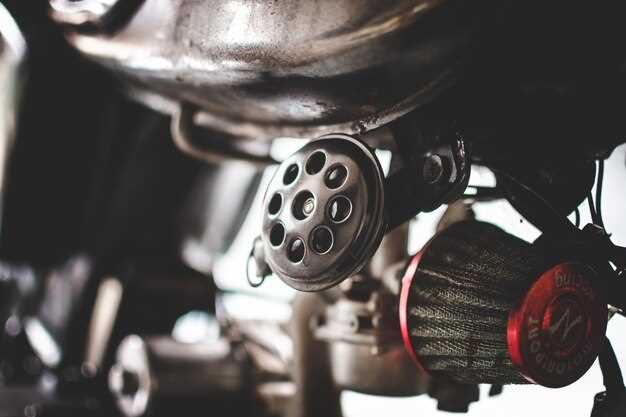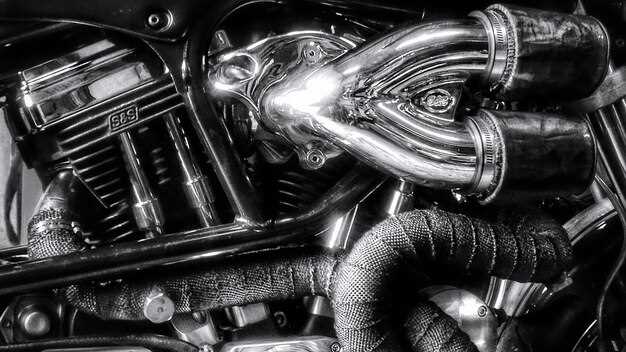
In the world of classic cars, the 1970s V8 engines hold a special place, cherished for their raw power and timeless design. These engines have often been celebrated not just for their performance, but also for the unique sound they produce. At the heart of their operation lies a crucial component: the ignition system. Spark plugs play a vital role in ensuring that combustion occurs efficiently and effectively, maximizing power output and fuel efficiency.
Choosing the right spark plugs for a classic 70s V8 engine can be a daunting task, as various factors influence performance. From the heat range to the materials used, every detail matters. The right spark plugs enhance ignition reliability, improve throttle response, and can even affect fuel consumption. In this article, we’ll explore the best spark plugs available for these beloved engines, focusing not only on performance but also on durability and affordability.
As car enthusiasts continue to restore and maintain their classic V8s, understanding the best ignition solutions becomes imperative. Spark plugs are not merely components; they are the crucial link between the engine and the performance enthusiasts crave. Join us as we dive into the top choices that will keep your classic 70s V8 engine running smoothly and efficiently.
Choosing the Right Spark Plug Type for Your Classic V8
Selecting the appropriate spark plugs for your classic 70s V8 engine is crucial for optimal performance and reliability. The ignition system in these engines relies heavily on the spark plugs to ignite the air-fuel mixture, making it essential to choose plugs that match the specifications of your vehicle.
There are several types of spark plugs available, each designed for specific applications. For classic V8 engines, copper, platinum, and iridium plugs are commonly considered. Copper plugs offer good conductivity and are often the most cost-effective option, but they have a shorter lifespan. Platinum plugs provide improved longevity and are ideal for engines that require a more stable ignition over an extended period. However, iridium plugs, while more expensive, offer the best performance and durability, making them suitable for high-performance applications in classic V8s.
When selecting spark plugs, pay attention to the heat range as well. The heat range is crucial for preventing pre-ignition and ensuring efficient combustion. Choosing a spark plug with the correct heat range will contribute to a smoother ignition process and enhance the overall performance of the engine.
It’s also important to consider the firing configuration of your spark plugs. Recommendations for gap settings can vary by manufacturer, so always consult your vehicle’s manual for the optimal gap specification. An incorrect gap can lead to misfires and poor fuel efficiency, which can significantly affect engine performance.
Lastly, ensure that the plugs are compatible with the type of ignition system your classic V8 employs. Whether it’s a standard distributor ignition or a high-performance coil-on-plug system, choosing the right spark plugs tailored to your ignition setup will greatly influence your engine’s responsiveness and power delivery.
Understanding Spark Plug Heat Range for Optimal Engine Performance

The heat range of a spark plug is a critical factor that directly affects the ignition performance of an engine, particularly in classic 70s V8 engines. The heat range refers to the ability of a spark plug to dissipate heat from the combustion chamber to the cylinder head. It is essential to select the correct heat range to ensure proper combustion and optimal engine performance.
A spark plug that is too hot can lead to pre-ignition, where the spark ignites the air-fuel mixture before the spark event occurs, resulting in engine knocking and potential damage. Conversely, a spark plug that is too cold may not reach the ideal operating temperature, causing fouling due to unburned fuel and oil deposits. This fouling can lead to misfires, reduced engine efficiency, and increased emissions.
To determine the appropriate heat range for a specific V8 engine, several factors should be considered, including engine design, compression ratio, and application. Performance modifications and driving conditions also play a significant role. For example, a high-performance setup may require a cooler spark plug to handle increased temperatures from higher compression ratios or boost levels, while a stock engine might benefit from a spark plug with a standard heat range to maintain stable ignition performance.
It’s advisable to consult manufacturer specifications and consider the driving environment. Regular inspection of spark plugs can provide insights into their performance, allowing for timely adjustments to ensure the ignition system operates effectively. Properly matched spark plugs not only enhance ignition reliability but also contribute to extended engine life and improved fuel efficiency.
Installation Tips for Spark Plugs in Vintage V8 Engines

Installing spark plugs in vintage V8 engines requires precision and attention to detail to ensure optimal ignition performance. Begin by selecting the right plugs that match the specifications of your engine, taking into account factors such as heat range and electrode design.
Before installation, ensure that the engine is cool to avoid damaging the threads. Clean the area around the spark plug ports to prevent debris from entering the combustion chamber. Utilize a wire brush or compressed air to remove any dirt or grime.
When tightening plugs, apply the manufacturer’s recommended torque specifications using a torque wrench. Over-tightening can damage the threads or lead to cracking while under-tightening may result in poor ignition or loss of compression.
Ensure that the spark plug gap is set correctly according to the engine’s manual, as an improper gap can lead to misfires or inefficient combustion. Use a feeler gauge to check and adjust the gap if necessary.
Consider using anti-seize compound on the threads to prevent future seizing, but apply it sparingly to avoid contamination of the combustion chamber. Always install the plugs by hand first to avoid cross-threading, and then use a socket wrench for final tightening.
After installation, start the engine and listen for a smooth ignition. If any issues arise, recheck the gaps and connections. Regular maintenance of the ignition system will ensure longevity and performance of vintage V8 engines.












